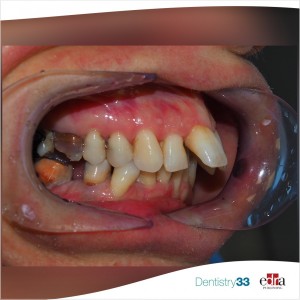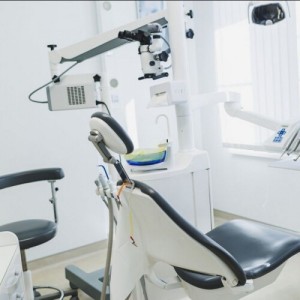
Orthodontic risks: what should we tell our patients?
Davide Elsido
Risk communication involves giving patients information about potential risks they may encounter as a result of a disease, a clinical procedure, or a particular behavior. An orthodontist may be liable to legal action by the patient and disciplinary proceedings if a patient is not given sufficient, meaningful, and balanced information about the risks of treatment. Effective communication of risk is a requisite for valid consent, shared decision-making, and the provision of person-centered care. The risks of orthodontic treatment have been defined broadly as any of the deleterious or iatrogenic effects of orthodontic treatment, or any potential adverse outcomes or consequences.
The communication of risk is particularly difficult in orthodontics as care is often elective and it takes place over an extended period. Because of the considerable investments of time and resources, the potential harms must be carefully weighed against the anticipated benefits.
Although paternalism has no place within health care, neither does the abandonment of patients by health care professionals failing to contribute to the decision-making process. The principles of shared decision-making encourage health care professionals to use their expert opinion for the benefit of patients as part of the consent process. In addition, because of heuristic strategies to make quick and effortless decisions, patients often do not seek new information but rely heavily on health care professionals’ advice about treatment.
Today, no agreed standard for the content of discussions with patients about the risks of orthodontic treatment exists.
This study, published on the January issue of the American Journal of Orthodontics, aimed to produce a professional consensus recommendation about the risks that should be discussed with patients as part of consent for orthodontic treatment.
A serial cross-sectional survey was completed by 237 orthodontists who reached a professional consensus that 10 risks should be discussed as part of consent for orthodontic treatment; demineralization, relapse, resorption, pain, gingivitis, ulceration, appliances breaking, failed tooth movements, treatment duration, and consequences of no treatment.
The results of this study support the need for treatment providers to have the necessary knowledge and communication skills to explain orthodontic risks to patients effectively.
Deciding what risk information should be given to orthodontic patients is a common clinical dilemma and has been made more complex by developments in consent law. To assist consent discussions, clinicians should consider discussing the salient risk information highlighted in this study.
For further information: Professional consensus on orthodontic risks: What orthodontists should tell their patients.
 Related articles
Related articles
To assess changes in oral health–related quality of life (OHQoL) in children undergoing fixed orthodontic treatment and compare it to that of two groups not receiving treatment.
Digital Dentistry 19 September 2022
The power of AI in orthodontics: Dr. Marina Domracheva, 3D Predict
Artificial intelligence (AI) has immense power, with applications that use data and results in near real-time. Dentistry33's Paola Omini recently spoke with Dr. Marina Domracheva, founder, and owner...
Orthodontics 05 September 2022
Effect of orthodontic treatment on periodontal health of periodontally compromised patients
An increasing number of adult patients are now seeking orthodontic treatment due to an increased focus of society on esthetics and health consciousness. With the incidence of periodontal problems...
Over the past few years, 3D cone beam computed tomography (CBCT) has become increasingly important in orthodontic diagnosis and treatment planning. 3D imagery has helped orthodontists get an accurate assessment of their patient’s teeth with the goal of cr
Aligners and Artificial IntelligenceThe growing orthodontics market is driving even greater demand for more effective, yet still comfortable, treatment options. Clear aligner manufacturer 3D Predict...
Orthodontics 20 May 2022
Orthodontic treatment and periodontally compromised patients: effects of the treatment
An increasing number of adult patients are now seeking orthodontic treatment due to an increased focus of society on esthetics and health consciousness. With the incidence of periodontal problems...
 Read more
Read more
Digital Dentistry 30 September 2025
Diagnosis and Treatment Planning for Predictable Restorative Outcomes
The dilemma in comprehensive dentistry is that dentists are often focused on restoring teeth for esthetic outcomes, and if occlusion is not taken into account during diagnosis and treatment planning,...
Editorials 30 September 2025
At Adams School of Dentistry, faculty and staff members often say their favorite part of working here is the people.
Products 30 September 2025
Dentsply Sirona is excited to announce the upcoming launch of an expanded AI-powered CEREC workflow and new milling units¹: CEREC Primemill Lite and CEREC Go, aimed at making Single Visit Dentistry...
News 30 September 2025
Gladwell Practice Solutions (GPS), founded by Dr. Jason Gladwell, a leading Invisalign System provider, is proud to announce the launch of GPS Premium, a new learning management program designed to...
News 30 September 2025
Dental City, a leading U.S. distributor of dental supplies, today announced that it has been named the winner of the Best Use of Robotics category at the Supply Chain Excellence Awards USA in Miami.






.jpg)







